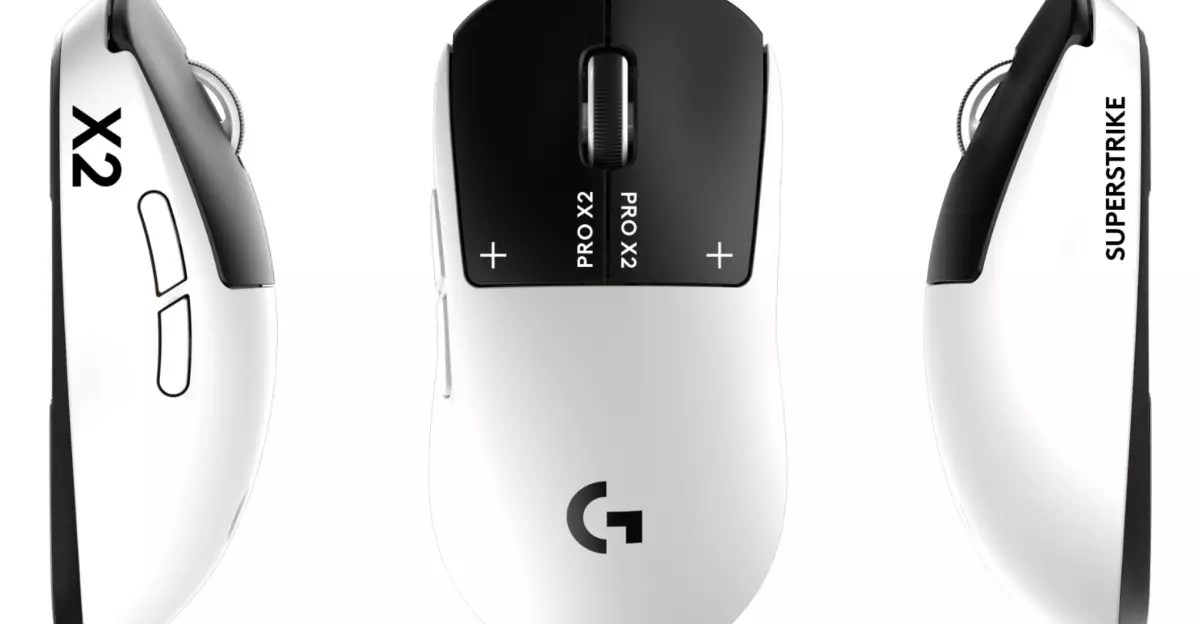The Logitech Superstrike is poised to redefine what gamers expect from high-performance mice. Unlike traditional models that rely solely on mechanical switches, the Superstrike introduces a groundbreaking approach with its analog sensor system that employs haptic feedback. This shift offers a more immersive and responsive experience, pushing the boundaries of speed and precision. The integration of the Haptic Inductive Trigger System (HITS) is a bold leap forward, combining the tactile satisfaction of mechanical switches with the versatility of digital customization.
This new approach taps into the realm of tactile simulation—users get the sensation of a click without the physical switch activation. Such innovation promises not only performance gains but also longevity, as the reliance on physical switches diminishes the wear and tear associated with traditional mice. The Superstrike’s design signals a clear message: Logitech is committed to reimagining gaming control, merging form and function through sophisticated haptic technologies.
Performance and Customization: A New Level of Control
One of the most compelling features of the Superstrike lies in its ultralow latency—claiming improvements of up to 30 milliseconds. This is particularly crucial for competitive gamers who thrive on every millisecond. The analog buttons that feature just 0.6mm of travel enable quick, sharp actuation, enabling faster reactions than ever before. Additionally, the inclusion of five customizable rapid trigger reset points transforms how players can optimize input timing, effectively allowing them to tailor their clicking strategy for maximum efficiency.
The idea of rapid trigger support—more common in high-end keyboards—is ingeniously adapted for a mouse. It grants users the ability to reset their input with minimal lift or force, facilitating continuous rapid firing or precise in-game actions. The level of granularity here offers a strategic advantage for shooters, RTS players, and esports competitors alike, pushing the envelope of what’s considered possible in a gaming mouse.
The software component, Logitech’s G Hub, provides extensive control over these features, allowing users to fine-tune settings to suit their gameplay style. This level of customization indicates Logitech’s deep understanding of competitive gaming needs and highlights their intent to offer a versatile tool rather than a one-size-fits-all device.
Design Philosophy and User Experience
At just 65 grams, the Superstrike embodies a lightweight design focused on ease of movement and comfort during extended gaming sessions. The inclusion of the Hero 2 sensor ensures high accuracy and responsiveness, supporting up to an 8,000Hz polling rate. While skeptics may question the tangible benefits of such an incredibly high polling rate, the combination with rapid trigger functionality could create a perceptible difference, especially for players with lightning-fast reflexes.
Complementing the Superstrike is the Superlight 2C—a smaller, lighter version weighing only 51 grams for a more agile grip tailored to players with smaller hands or those who prefer a more minimalist build. Priced at just under $160, the Superlight 2C emphasizes accessibility without sacrificing the performance features found in its larger counterpart.
The design philosophy here underscores versatility. Whether you need a full-sized powerhouse or a compact, nimble option, Logitech seems committed to democratizing premium gaming mice. The focus on lightweight construction, combined with high-end tech, suggests an understanding that speed and agility are paramount in modern competitive gaming.
Looking Ahead: Is This the Future of Gaming Mice?
While skepticism about ultra-high polling rates is understandable—since human reaction times often don’t match such rapid data transmission—the Superstrike’s real innovation lies in its fusion of analog feedback, rapid triggers, and ultra-low latency. It challenges conventional notions of what a gaming mouse can be, leaning into a future where digital and tactile interfaces blur seamlessly.
The Superstrike is not just an evolutionary step but a revolutionary one. It signals a paradigm shift where sensory feedback, responsiveness, and customization become the cornerstone of gaming hardware. For competitive gaming, this could mean the difference between victory and defeat, offering players a tool that transforms reflexes into precision with unmatched finesse.
By daring to challenge the status quo, Logitech demonstrates that the future of gaming peripherals may well hinge on our ability to merge technology, ergonomics, and intuitive control into a single, cohesive experience. The question remains: will the gaming community embrace this new frontier, or will skepticism about the practicality of these advancements hinder widespread adoption? Either way, the Superstrike boldly charts a course toward a more dynamic, tactile, and responsive gaming experience.

